Idaho Falls, Idaho 作者: 来源: 发布时间:2021-11-03
I.Population and Area
₋Area
Land: 24.00 sq mi (62.16 km2)
₋Population
Total: 62,888
Density: 2,620.44/sq mi (1,011.75/km2)
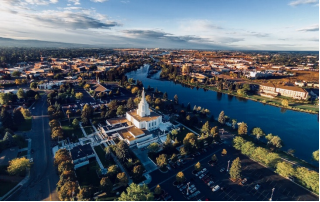
II.Natural Geography
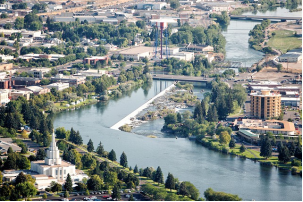
City Top View & Port View
₋Idaho Falls is a city in and the county seat of Bonneville County, Idaho, United States. It is the state's largest city outside the Boise metropolitan area. As of the 2010 census, the population of Idaho Falls was 56,813 (2019 estimate: 62,888), with a metro population of 133,265.
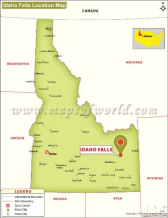
₋Idaho Falls serves as the commercial, cultural, and healthcare hub for eastern Idaho, as well as parts of western Wyoming and southern Montana. It is served by the Idaho Falls Regional Airport and is home to the College of Eastern Idaho, Museum of Idaho, and the Idaho Falls Chukars minor league baseball team. It is the principal city of the Idaho Falls Metropolitan Statistical Area and the Idaho Falls-Blackfoot, Idaho Combined Statistical Area.
III.ECONOMY
₋The average salary in Idaho Falls, ID is $16.06. Trends in wages decreased by -100.0 percent in Q1 2020. The cost of living in Idaho Falls, ID is 18 percent higher than the national average. The most popular occupations in Idaho Falls, ID are Certified Nurse Assistant (CNA), Registered Nurse (RN), and Administrative Assistant which pay between $10.13 and $31.14 per year. The most popular employers in Idaho Falls, ID are Eastern Idaho Regional Medical Center, Mountain View, and Melaleuca Incorporated.
₋Website: https://www.payscale.com/research/US/Location=Idaho-Falls-ID/Salary
IV.Industrial Characteristics
₋Idaho Falls serves as a regional hub for health care, travel, and business in eastern Idaho.
₋The community's economy was mostly agriculturally focused until the opening of the National Reactor Testing Station in the desert west of Idaho Falls in 1949. The city subsequently became largely dependent on high-income jobs from the Idaho National Laboratory (INL), known locally simply as "The Site." Since the 1990s, the city has added a significant retail, entertainment, and restaurant sector, as well as a regional medical center.
₋Idaho Falls was named by Business Week on the 2010 list of "Best Places to Raise Kids". Forbes.com selected Idaho Falls as one of the "2010 Best Small Places for Business & Careers". Money.CNN.com included Idaho Falls as one of their "Top 100 Cities in 2010".
₋Idaho Falls hosts the headquarters of the United Potato Growers of Idaho and District 7 of the Idaho Department of Health and Welfare. It is the home to several small-to-medium-sized national corporations such as North Wind, Inc., Press-A-Print, and multi-level marketing company Melaleuca, Inc.
₋The median home price in Idaho Falls was $224,800 in January 2007.
V.Attractions
1.Idaho Falls Zoo at Tautphaus Park
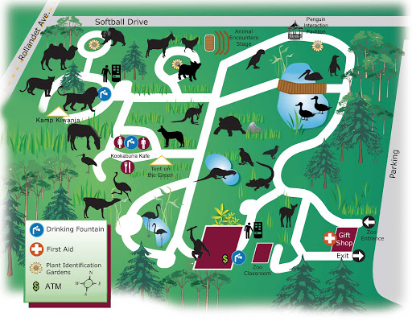
₋With more than 300 individual animals representing 130 species from around the globe, the Idaho Falls Zoo is known as the "best little zoo in the west." The first zoo in Idaho to be accredited by the Association of Zoos and Aquariums, Idaho Falls Zoo currently participates in over 40 Species Survival Plans.
The Idaho Falls Zoo is always looking for ways to improve our zoo today and in the years to come.
₋Thanks for joining the Tautphaus Park Zoological Society and supporting the Idaho Falls Zoo at Tautphaus Park! The Tautphaus Park Zoological Society (TPZS) is a non-profit corporation dedicated to assisting the City of Idaho Falls in the promotion and expansion of the zoo – for our families and the animals.
₋When you join the Tautphaus Park Zoological Society (TPZS) by purchasing a membership you become part of the zoo’s efforts to meet the challenges of preserving and conserving threatened and endangered animal species. Idaho Falls Zoo’s exhibits are designed to increase awareness and understanding of the animal kingdom and the natural habitats in which they live. The monies raised through membership sales help us accomplish our goals of conservation, education and research. The contribution you make is important to you, to us, and to the future of our world.
₋The Tautphaus Park Zoological Society (TPZS) has a mission to support the Idaho Falls Zoo by fundraising with events such as Wines in the Wild, Chillin’ at the Zoo, Zoo Brew, Hawaiian Luau, Masquerade Ball and Boo at the Zoo; and to promote projects that support increased self-sufficiency of the Zoo. Financial self-sufficiency will allow the Zoo to continue to improve on conservation, high quality care of the animals, and a great visitor experience.
₋Address: 2725 Carnival Way, Idaho Falls, ID 83402, United States
₋Phone: +1 208-612-8470
₋Website: https://www.idahofallsidaho.gov/1230/Zoo
2.Idaho Falls River
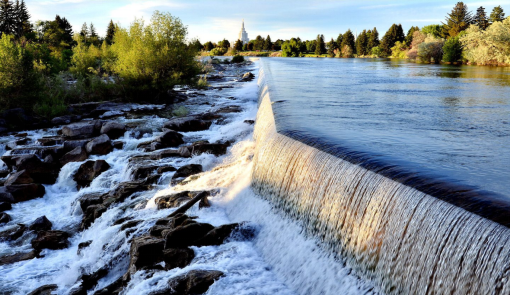
₋Welcome to the Idaho Falls River Walk, a spectacular way to see and explore the things that makes Idaho Falls unique. Covering 5 miles on both sides of the Snake River it is a joint project of the city and its residents spearheaded by the Idaho Falls Rotary Club whose annual Great Snake River Duck Race provides additional funds for expansion and improvement of the project. We hope you enjoy your visit to the River Walk and will come back soon.
₋Address: 525 River Pkwy, Idaho Falls, ID 83402, United States
₋Phone: +1 208-529-1200
₋Website: https://www.idahofallsidaho.gov/Facilities/Facility/Details/River-Walk-69
3.Idaho Falls Idaho Temple
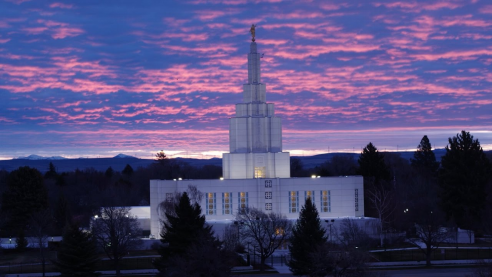
₋The Idaho Falls Idaho Temple (formerly the Idaho Falls Temple) is the tenth constructed and eighth operating temple of The Church of Jesus Christ of Latter-day Saints (LDS Church). Located in the city of Idaho Falls, Idaho, it was the LDS Church's first temple built in Idaho, and the first built with a modern single-spire design.
₋The temple in Idaho Falls was announced on March 3, 1937. The building was designed by the church board of temple architects: Edward O. Anderson, Georgious Y. Cannon, Ramm Hansen, John Fetzer, Hyrum Pope, Lorenzo Snow Young. The exterior of the temple was completed in September 1941 and the interior was expected to be completed the following year. However, with World War II shortages, it delayed the completion of the temple for four more years. In spite of delays, LDS Church president George Albert Smith dedicated the Idaho Falls Temple just one month after the war ended, on September 23, 1945. The temple was built on a 7-acre (2.8 ha) plot, has four ordinance rooms and nine sealing rooms, and has a total floor area of 92,177 square feet (8,563.5 m2).
₋The name of the temple was changed from the Idaho Falls Temple to the Idaho Falls Idaho Temple in 1999 when the church introduced standardized naming conventions for temples worldwide.
₋In March 2015, the temple closed for renovations that were expected to last 18 months. The renovations took nearly two years and following their completion, a public open house was held from April 22 through May 20, 2017. The temple was rededicated by Henry B. Eyring on June 4, 2017.
₋Address: 1000 Memorial Dr, Idaho Falls, ID 83402, United States
₋Opened: September 23, 1945
₋Height: 44 m
₋Phone: +1 208-522-7669
₋Website: https://www.churchofjesuschrist.org/temples/details/idaho-falls-idaho-temple?lang=eng
VI.History
₋Montana Trail origins
₋The area around Idaho Falls was first sparsely settled by cattle and sheep ranchers. No significant development took place until 1864, when a man named Harry Rickets built and operated a ferry on the Snake River at 43°36.112′N 112°3.528′W. The ferry served a new tide of westward migration and travel on the Montana Trail following the Bear River Massacre of Shoshone Indians in 1863.
₋The present-day site of Idaho Falls became a permanent settlement when freighter Matt Taylor built a timber-frame toll bridge across a narrow black basaltic gorge of the river 7 miles (11 km) downstream from the ferry. The bridge improved travel for settlers moving north and west, and for miners, freighters, and others seeking riches in the gold fields of Idaho and Montana—especially the boom towns of Bannack and Virginia City.
₋Eagle Rock
₋By the end of 1865, a private bank, small hotel, livery stable, eating house, post office, and stage station had sprung up near the bridge. The settlement was initially known as Taylor's Crossing, but postmarks indicate that by 1866, the emerging town had become known as Eagle Rock. The name was derived from an isolated basalt island in the river near the ferry, where approximately twenty eagles nested.
₋In 1874, water rights were established on nearby Willow Creek and the first grain was harvested. Settlement was sparse, and consisted of only a couple of families and small irrigation ditches. The first child of European descent was born at Eagle Rock in 1874.
₋Soon, the Utah and Northern Railway (U&NR) was built, stretching north from Utah through Eagle Rock and crossing the Snake River at the same narrow gorge as Taylor's bridge. The railway would eventually connect to the large new copper mines at Butte, Montana. The U&NR had the backing of robber baron Jay Gould, as Union Pacific Railroad had purchased it a few years prior. Grading crews reached Eagle Rock in late 1878, and by early 1879, a wild camp-town with dozens of tents and shanties had moved to Eagle Rock with a collection of saloons, dance halls, and gambling halls. The railroad company had 16 locomotives and 300 train cars working between Logan, Utah and the once-quiet stage stop. A new iron railroad bridge was fabricated in Athens, Pennsylvania at a cost of $30,000 and shipped by rail to the site, where it was erected in April and May 1879. The bridge was 800 feet (240 m) long and had two spans, with an island in the center. The camp-town moved on, but Eagle Rock now had regular train service and several U&NR buildings, shops, and facilities which expanded and transformed the town.
₋As soon as the railroad came through, settlers began homesteading the upper Snake River Valley in earnest. The first new settlers carved out homesteads to the north at Egin (near present-day Parker) and at Pooles Island (near present-day Menan). The Utah & Northern Railway provided easy access, especially to homesteaders from Utah, who soon populated much of the area surrounding Eagle Rock. Some of these men had initially worked building the railroad, then later returned with their families to stake out new farms. These Utah families brought irrigation know-how developed in Utah's Great Basin settlements. Through their and others' canal systems, water from the Snake River made the Upper Snake River Valley into one of the most successful irrigation projects in the Mountain West. Large-scale settlement ensued and within a decade, there appeared roads, bridges, and dams, which brought most of the Upper Snake River Valley under cultivation.
₋Then, in 1887, following the construction of the Oregon Short Line and a railroad workers' strike in Eagle Rock, most of the railroad facilities were moved to Pocatello, where the new line branched off the U&NR. This caused a sharp and immediate drop in population, which nearly killed the town. In 1891, in an effort to attract farmers wary of eagles and rocks, marketers convinced town leaders to change the name to Idaho Falls in reference to the rapids below the bridge. Some years later, the construction of a retaining wall for a hydroelectric power plant transformed the rapids into waterfalls. On June 22, 1895, the world's then-largest irrigation canal, the Great Feeder (located 5 miles northeast of Ririe), began diverting water from the Snake River, helping to convert tens of thousands of more acres of desert into green farmland. The area grew sugar beets, potatoes, peas, grains, and alfalfa, and became one of the most productive agricultural regions of the United States. The city once again began to flourish, growing continuously into the 20th century.
₋Nuclear reactors
₋In 1949, the Atomic Energy Commission opened the National Reactor Testing Station (NRTS) in the desert west of Idaho Falls. On Dec. 20, 1951, a nuclear reactor there produced useful electricity for the first time in history. There have been more than 50 unique reactors built at the facility for testing- only three remain active.
₋On January 3, 1961, NRTS became the scene of the only fatal nuclear reactor incident in U.S. history. The event occurred at an experimental U.S. Army plant known as the Argonne Low-Power Reactor, which the Army called the Stationary Low-Power Reactor Number One (SL-1). Due to poor design and maintenance procedures, a single control rod was manually pulled out too far from the reactor, causing the reactor to become prompt critical, leading to a destructive power excursion. Three trained military men had been working inside the reactor room when a mistake was made while reattaching a control rod to its motor assembly. With the central control rod nearly fully extended, the nuclear reactor rated at 3 MW rapidly increased power to 20 GW. This rapidly boiled the water inside the core. As the steam expanded, a pressure wave of water forcefully struck the top of the reactor vessel, upon which two of the men stood. The explosion was so severe that the reactor vessel was propelled nine feet into the air, striking the ceiling before settling back into its original position. One man was impaled by a shield plug and lodged into the ceiling, where he died instantly. The other men died from their injuries within hours. The three men were buried in lead coffins, and that entire section of the site was buried. The core meltdown caused no damage to the area, although some radioactive nuclear fission products were released into the atmosphere.
₋The site has since developed into the Idaho National Laboratory (INL), a national laboratory operated by the United States Department of Energy. INL and its contractors are a major economic engine for the Idaho Falls area, employing more than 8,000 people between the desert site and its research and education campus in Idaho Falls. Among other projects, INL operates and manages the world-famous Advanced Test Reactor (ATR).
VII.Other Information
₋Arts and Culture
₋The Willard Arts Center, The Colonial Theatre and Civic Auditorium host musical concerts, plays, and events.
₋The Museum of Idahoshowcases local artifacts and history. It also brings in major traveling exhibits such as fossilized dinosaurs, Gutenberg Bibles, Titanic remnants, and "Bodies: the Exhibition."
₋Downtown Idaho Falls once struggled as the city expanded eastward, but it has been revitalized in recent years due to the efforts of local business owners, the City of Idaho Falls, and other organizations such as the Downtown Development Corporation and the Idaho Falls Chamber of Commerce. Today, it is home to a handful of locally owned shops, stores, restaurants, galleries, theaters, and future revitalization efforts.
₋The city attracts many tourists visiting nearby Yellowstone and Grand Teton National Parks, Jackson Hole, and fishing on the Snake River. Due to its proximity to high-profile outdoor destinations, Idaho Falls was recently named to National Geographic's list of "100 Best Adventure Towns".
₋Education
₋Higher education
₋Idaho Falls is home to a few higher education options, including College of Eastern Idaho. Originally established in 1969 as a vocational-technical college named Eastern Idaho Technical College, in May 2017, voters approved a measure to transition EITC into Eastern Idaho's only community college. Stevens-Henager College and University of Phoenix have also opened local resource centers in order to aid students in online degree programs.
₋A unique satellite campus called University Place features dual enrollment for students in both Pocatello-based Idaho State University and Moscow-based University of Idaho. Students generally earn core classes at University Place and then transfer to ISU's or UI's main campus to finish their degrees. However, a few dozen degree programs, both undergraduate and graduate, are fully offered at University Place. The campus also boasts high-tech facilities such as the Center for Advanced Energy Studies (CAES). CAES is run by a partnership of Idaho's three research universities (UI, ISU, Boise State) and Idaho National Laboratory (INL).
₋Primary and secondary education
₋Idaho Falls is served by Idaho Falls School District #91 and Bonneville Joint School District #93. District #91 covers the majority of urban Idaho Falls and a small portion of Bonneville County west of the city. District #93 covers minimal parts of eastern Idaho Falls, and the remainder of Bonneville County with the exception of some remote areas that have independent elementary districts. All middle and high school students are transported in to District #93 secondary schools.
₋Idaho Falls is home to eight public high schools, four public middle schools and 26 public elementary schools. It is also served by four public charter schools and three private schools.
₋Public high schools (9-12)
Bonneville High School
Hillcrest High School
Idaho Falls High School
Skyline High School
Thunder Ridge High School
Each fall, the varsity football teams of Idaho Falls and Skyline compete in a rival football game called the Emotion Bowl. Each year, after the game, the winning team and its fans traditionally paint the goalposts of the stadium in their school colors (orange for Idaho Falls and blue for Skyline). Bonneville and Hillcrest participate in a similar event known as the Civil War.
VIII.Contact Information
₋Government
Mayor: Rebecca Casper
₋City Hall
₋Mailing Address
žP.O. Box 50220
Idaho Falls, ID 83402
₋Physical Address
308 Constitution Way
Idaho Falls, ID 83405
Phone: 208-612-8777
Website: https://www.idahofallsidaho.gov/1365/Contact
